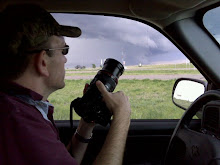The particulars of the mysteries we are going to explore revolve around a Ruger Model 77, Mark I in the .243 Winchester caliber. My Dad has this model manufactured 2 years prior to my M77. However, my rifle was passed down from my maternal grandfather, to an uncle, and then to me. We don't know how many time my M77 was shot, what ammo has run through it, or what environment it was kept in. The rifle was handed down to me after my uncle lost his battle with cancer and I never really shot it because I already had a .30-06 caliber rifle I used for hunting as well as a plethora of other choices from family members.
Our family has used the .243 pretty much since the caliber became available to the general public. This, along with the .250-3000 Savage and .257 Roberts were considered excellent varmint and medium-sized game calibers when they came out and these game are what we primarily hunt. However, the bulk of my grandfather's reloading work centered around the .243 and I knew that we had ample information to develop gun loads. I also wanted to keep my Ruger at home with me to have available in case opportunities arose where I needed a medium-caliber rifle. All my other rifles are locked up in a gun safe because of their sentimental and/or monetary value in them.
About three years ago, I brought the rifle with me during white-tailed deer season to see how it performed on bigger game. Up to that time, I had only used the M77 to try and contain an prairie dog infestation on some family land (the prairie dogs have chewed up 200+ acres of grassland which is now unsuitable for livestock and has had much of the topsoil blow away). Results were good with the small game and I thought that it would also be the same for larger game. Not so...
That year when I took out my M77, I had several deer that required two shots to put down which is NOT the humane way to do things. There were also several missed shots as well. I couldn't understand what was going on and we took the rifle to our range and tested it. Unfortunately the loads were shooting with no accuracy or consistency. Accuracy meaning it was not hitting where I was aiming and consistency meaning bullets land in close proximity to each other. My dad and I would resight my scope/rifle, all with the same powder load/bullet/primer combinations in the cartridge, and I could only get groups of around 2 inches. We would then take the same loads and BOTH my dad and I would achieve 1/4 to 3/4 inch groups at 100 yards with his M77 in the exact same caliber.
Initially we though the problem was with the scope. It was an old Burris variable power model and I personally am not a big fan of variable power scopes. The sight pictures was not circular; it was more of an oval and had thick cross-hairs that I didn't like as well. We also weren't sure how well the scope was mounted to the rifle so I decided to swap out the scope mount rings and scope to a Leupold FX-2 with Leupold rings. Sure enough, pulling the old scope off indicated that whatever gunsmith installed the scope had tightened the rings beyond normal torque specifications. The finish of the scope had been crushed off exposing bare aluminum and there were slight indentations on the barrel of the scope as well. Several of the scope mount screws were also slightly stripped, indicative of over-tightening.
After reading as much as I could on how to mount scopes and the arrival of the tools, rings, and scope, my Dad and I mounted it on the M77. We boresighted the rifle/scope and started to shoot once again with the same loads used in the initial testing. Accuracy increased quite a bit but the consistency was still not as good as we wanted. There was something else going on that we had to figure out and this will be discussed in the next installment.
Let Me See Jesus (Matt Redman, Charity Gayle)
3 months ago






No comments:
Post a Comment